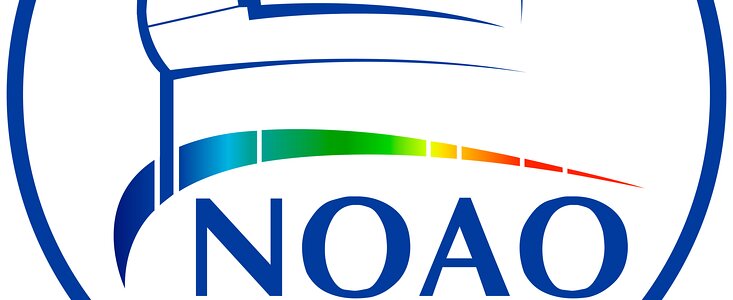"Rush to the Poles" Predicts Coming Solar Max
31 May 1999
The Sun is known to exhibit a maximum of activity, including solar flares and an increased number of sunspots and coronal mass ejections, approximately every 11 years. Dr. Richard C. Altrock announces today his prediction that the next solar maximum will occur between January and April of 2000 based on a new method employing daily observations of high latitude coronal activity. Dr. Altrock, an Air Force Research Laboratory astronomer at the National Science Foundation's National Solar Observatory (NSO) at Sacramento Peak, New Mexico, will present his result today to the American Astronomical Society meeting in Chicago, Illinois. This prediction is of interest to solar astronomers and others who design and operate satellites.
Most predictions of the exact time of solar maximum are based on physical conditions occurring at or before the preceding minimum activity period. Dr. Altrock's method of predicting solar max is based on a phenomenon known as "Rush to the Poles", the appearance and migration towards the solar poles of high latitude coronal emission features that appear early in the rise phase of the solar cycle.
Observations consist of daily scans of the Fe XIV coronal emission line with the John W. Evans Solar Facility of the NSO at Sacramento Peak. The Fe XIV emission line is produced by iron with thirteen electrons removed, resulting from the million-degree temperature of the corona. A study of these features over three solar cycles shows that 15±1 months before these coronal emission features reach the pole, the maximum solar activity level occurs. Emission features appear near 55 deg. latitude in both hemispheres and begin to move towards the poles at a rate of 9 to 13 degrees of latitude per year. This motion is maintained for a period of 3 or 4 years, at which time the emission features disappear near the poles. Using observations through April 1999, the current "Rush to the Poles" results in a prediction for solar maximum within the four-month window of January to April of 2000. A maximum smoothed sunspot number of approximately 160 is inferred, similar to observed values for the past two solar maxima (158 in 1989, 164 in 1979).
Notes
This work is supported by the Air Force Office of Scientific Research. The National Solar Observatory is one of four divisions of the National Optical Astronomy Observatory (NOAO). NOAO is operated by the Association of Universities for Research in Astronomy (AURA), Inc., under cooperative agreement with the National Science Foundation.
Contacts
Suzanne Jacoby
NOAO Press Officer
Tel: (520) 318-8364
Email: sjacoby@noao.edu
Dr. Richard Altrock
AFRL/NSO
Tel: (505) 434-7016
Email: raltrock@noao.edu



